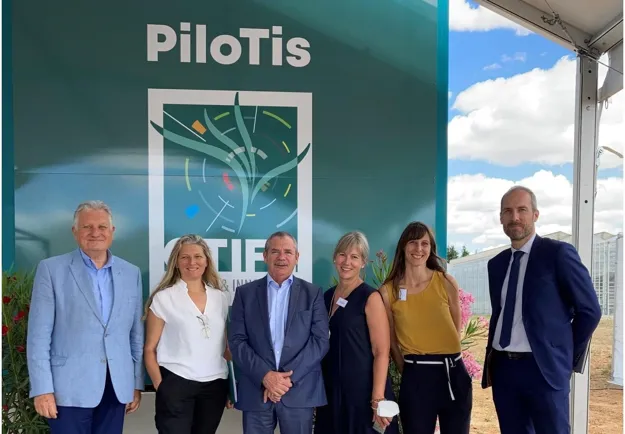CTIFL inaugurated PiloTis, the new structure dedicated to the development of the sterile insect technique (SIT) on July 8th 2021 at its operational center of Balandran alongside Aurélie Genholer, regional councillor of Occitania.

On this occasion, Jacques Rouchaussé, president of CTIFL, recalled the beginning of this adventure of dissemination of the SIT in Europe, which started as a Franco-Canadian collaboration during a trip in August 2018. He reaffirmed the ambition of CTIFL to become the European leader in SIT. This technique fits in a logic to reduce the use of pesticides, in response to the challenges of the sector. The president thanked the teams working daily on the research, as well as the different centers and experimental stations that are partners of CTIFL because it is “together that we can determine a strategy that will allow us tomorrow to be more respectful of nature and achieve higher competitiveness.”
Ludovic Guinard, deputy managing director of CTIFL, insisted on the need to transfer this technique as soon as possible to professionals through the efforts of all partners of this project. The goal is to obtain some first results on the codling moth and drosophila suzukii within 1 to 2 years. He stated again CTIFL’s objective to provide France with an innovative tool on an industrial scale by ensuring the implementation of a robust and rigorous method. This action can only be achieved with stronger financial support from the French government.
Clélia Oliva, head of the SIT program at CTIFL and coordinator of the SIT Collective, mentioned the development of SIT in France by presenting the different levers that can help integrate the technique into crop protection strategies.
As for Cara Nelson, former director of the OKSIR program in Canada, she shared her experience and emphasized the effectiveness of SIT. For example, it reduces the use of pesticides by 96%. The codling moth population was reduced by 94% and the crop protection costs were also 35% lower for the producers. The move from a proof of concept to the emergence of an industrial-scale company today reflects the success of this technique across the Atlantic. According to Cara Nelson, the two keys to success after 30 years of experience are communication and teamwork between the different local actors in order to set up the technique.
This introduction was followed by the inauguration of the PiloTis structure. The guests gathered to discuss research programs, the production of sterile insects, the presentation of the CarpoTIS and CeraTIS Corsica projects, as well as the perception of local actors for the integration of SIT.
Early in the afternoon, a complementary visit to the ALTO orchard with a 0 IFT objective, of the connected orchard and the research projects in integrated protection under cover closed this inauguration.
For more information:
CTIFL
01 87 76 04 00
communication@ctifl.fr
